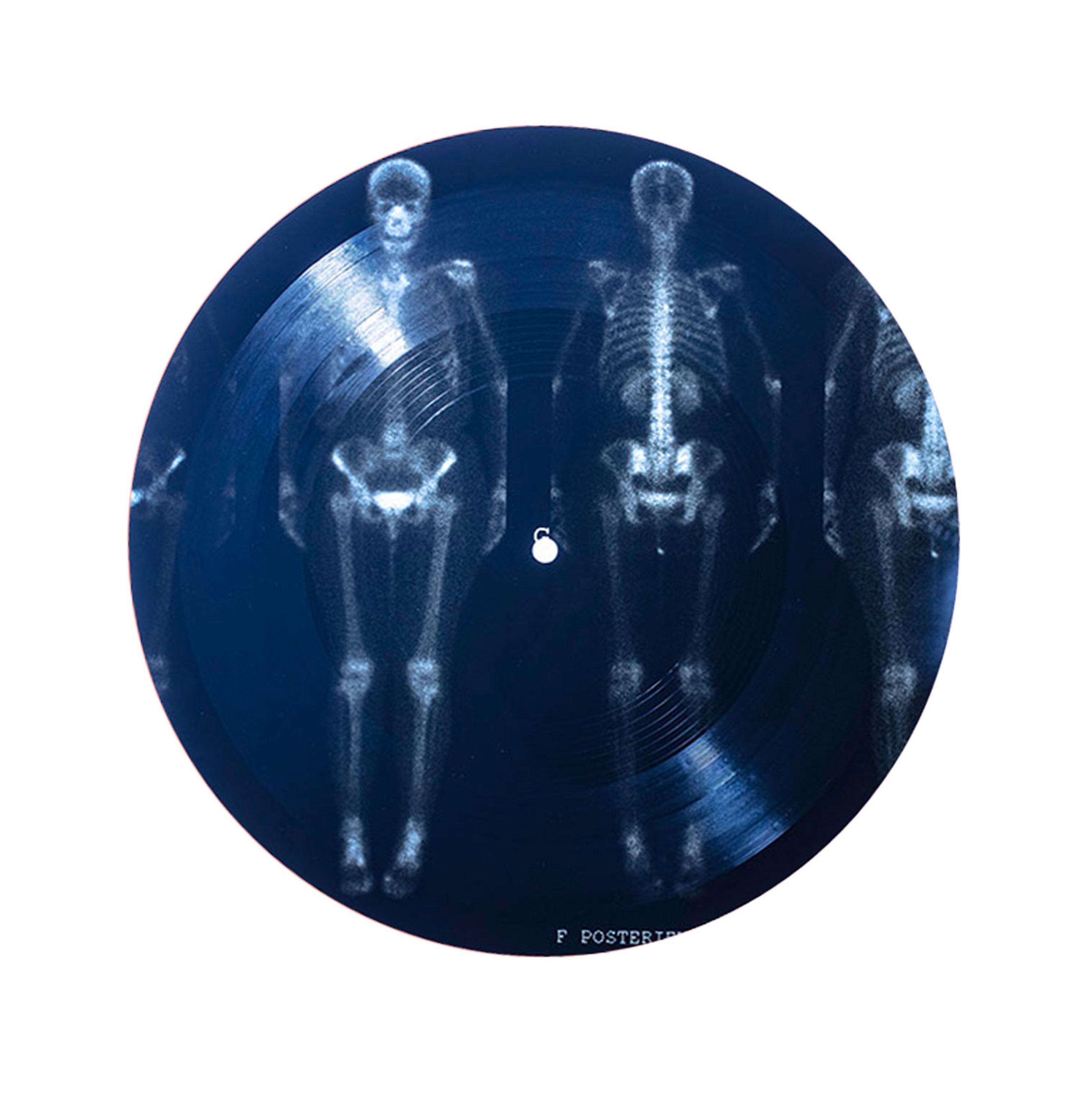
In the Soviet Union during the Cold War era, the music people could listen to was ruthlessly controlled by the State. But a secret underground subculture of music lovers and bootleggers defied the censor. Incredibly, they built their own recording machines and used an extraordinary way of copying forbidden jazz, rock ‘n’ roll and banned Russian music onto used X-ray film which were then cut into “records.”
“They are images of pain and damage inscribed with the sounds of forbidden pleasure; fragile photographs of the interiors of Soviet citizens layered with the ghostly music they secretly loved, they are skin-thin slivers of DIY punk protest; they are ‘Roentgenizdat’.”
For most of us, the notion of a forbidden song is a strange one – outside those restricted for homophobic or racist lyrical content. And in our era of streaming and unlimited digital distribution, it’s interesting perhaps to wonder what a single song is worth. But until around 30 years ago, forbidden songs were a fact of life in the USSR, and people would go to great lengths, and take big risks, because they valued a particular tune so highly.
Back in the Tsarist times, certain songs and performers were prohibited in Russia, but after the revolution of 1917, almost all culture from those Tsarist times was subjected to a brutal censor itself. As the 1920s and 1930s wore on, the exciting sonic experiments of early Soviet electronic innovators—men like Leon Theremin—who were genuinely attempting to soundtrack the new cultural landscape, began to be brutally repressed too. A strange new jack-boot conservatism with regard to music took hold as Stalin increased his stranglehold on power. The lists of prohibited ‘non-Soviet’ music began to grow: music with foreign influence; ‘formalist’ music (almost anything abstract or with complex harmony); gypsy romance; ‘blatnaya’; criminal songs; songs sung in the gulags; songs sung by emigres all came under fire. Of course, Dictators never like jazz. which was targeted by none other than writer Maxim Gorky, who in describing it in 1928 as the ‘music of the fat’ decried its sounds that appeared to him as:
“Rumblings, wails and howls like the smarting of a metal pig, the shriek of a donkey, or the amorous croaking of a monstrous frog. Bestial cries are heard, neighing horses, wild screaming, hissing, rattling, wailing, moaning, cackling. The insulting chaos of insanity pulses to a throbbing rhythm.
“Listening to this screaming music for a few minutes” he protested,
“One involuntarily imagines an orchestra of sexual maniacs led by a man-stallion beating time with an enormous phallus.”
Phew.


Meanwhile, ‘Commissar of Enlightenment’, Anatoly Lunacharskiy, had taken a pot-shot at the syncopation of the seemingly innocent foxtrot:
“These rhythms are inhuman; they turn the brain into a meatball. We stand for joy, we have reasons to be happy and dance. We have young people who have already had great victories and who will have more. Why should they not dance? But here is the question: Why should it be the foxtrot”.
Emigre singers were, of course, beyond the pale because they lived and worked in the decadent West. The wonderful and hugely popular Pyotr Leschenko, singing Russian tango in his cabaret in Bucharest, was wrongly condemned as belonging to the despicable bourgeois ‘White Russians’ who had fled after the Revolution.
After a brief period of tolerance toward American films and music during the Second World War, the Iron Curtain came down hard on most Western music, especially swing, jazz and the ‘hooligan’ Rock ‘n’ Roll. So by the late 1940s, a huge amount of popular music was subject to censorship or restriction, a population was cut off from its culture and from the glamour of outside influence. With smuggled gramophone records only available to those permitted to travel abroad and jammed foreign radio broadcasts accessible only to those with the technical know-how, the pressure was building. Something had to change. And something did change.
In a culture where the recording industry was completely controlled by the state, an underground community of music lovers and bootleggers discovered an extraordinary, risky means to copy and distribute the music they loved. They built their own recording machines and copied forbidden jazz, rock ’n’ roll and Russian songs onto used x-ray film sourced secretly from Soviet hospitals, in order to make and distribute their own records. It was an ingenious street enterprise, a defiant act of anti- establishment punk protest. Some of them suffered for it, through imprisonment and persecution. But they couldn’t be stopped because they were giving people back what they wanted, what they had loved and lost – and a taste of freedom.

The X-Ray Audio Project by The Bureau of Lost Culture tells the story of these strange records and of the people who made, played and traded them. It is now an online archive, a book, an award-winning documentary, an internationally traveling exhibition and upcoming feature film. www.x-rayaudio.com